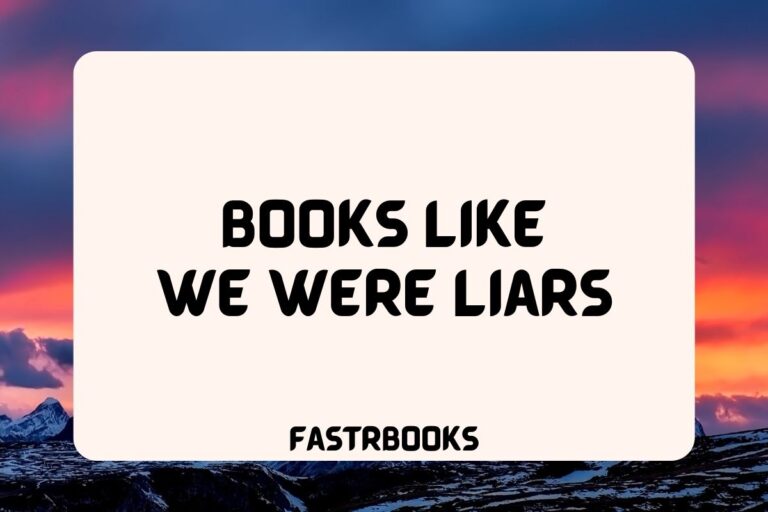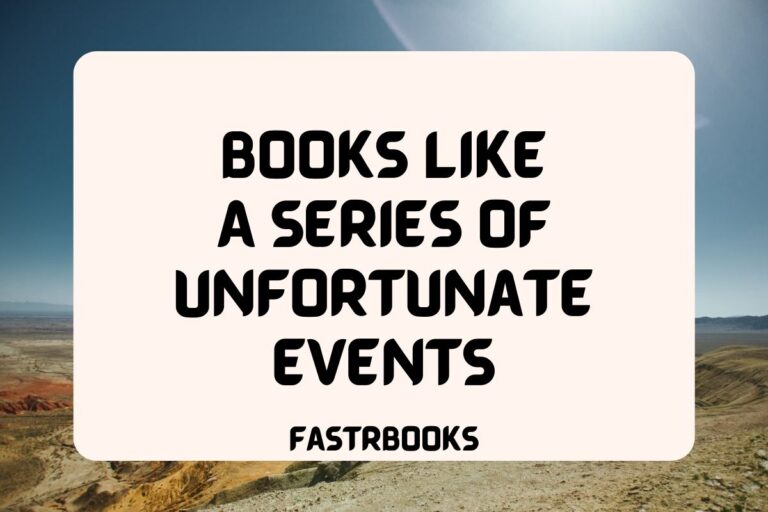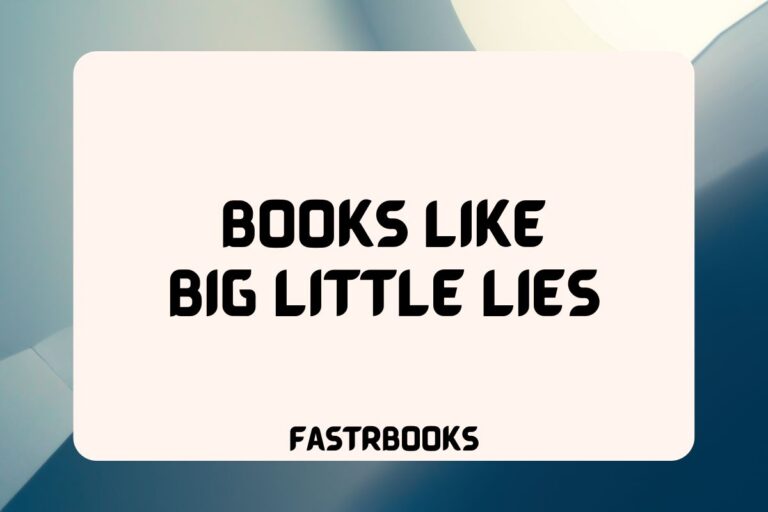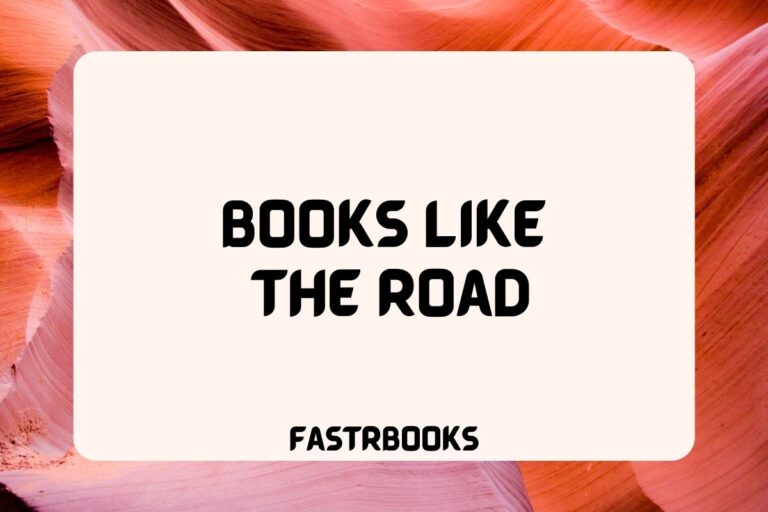19 Books Like Lord of the Rings
Embarking on a literary journey akin to J.R.R. Tolkien’s magnum opus, “The Lord of the Rings,” opens doors to realms where magic thrives, heroes arise, and epic quests unfold.
While Tolkien’s masterpiece stands unparalleled, there exists a treasure trove of fantastical worlds waiting to be explored, each resonating with elements that captivate the imagination.
Here, we traverse through realms teeming with adventure, fellowship, and the enduring battle between good and evil, offering readers a glimpse into the captivating landscapes of literature reminiscent of Middle-earth’s grandeur.
Books Like Lord of the Rings
1. The Hobbit by J.R.R. Tolkien
Before “The Lord of the Rings,” there was “The Hobbit,” a tale of adventure that introduces Bilbo Baggins, Gandalf, and the world of Middle-earth.
In this prelude, Bilbo embarks on a journey to help a group of dwarves reclaim their home from the dragon Smaug. Along the way, he encounters trolls, goblins, and obtains the One Ring, setting the stage for the events of “The Lord of the Rings.”
Major Similarities: Like “The Lord of the Rings,” “The Hobbit” is set in Middle-earth and shares many of the same races, including hobbits, dwarves, elves, and men. It focuses on a journey filled with danger and the theme of bravery and friendship. The presence of Gandalf and the One Ring links both stories directly, creating a cohesive world and narrative.
2. The Wheel of Time by Robert Jordan
“The Wheel of Time” series begins with “The Eye of the World,” where readers are introduced to Rand al’Thor and his friends, who are forced to leave their village to escape a malevolent force. Their journey becomes one of discovery, prophecy, and the battle between light and darkness. The series spans fourteen volumes, each contributing to an epic tale of fate and free will.
Major Similarities: The series features a richly developed world with its own history, cultures, and magical system, akin to Middle-earth. The central theme of a reluctant hero rising to challenge a dark power mirrors Frodo’s journey. Additionally, the ensemble cast of characters and the epic scope of the narrative closely resemble Tolkien’s work.
3. The Chronicles of Narnia by C.S. Lewis
This seven-book series starts with “The Lion, the Witch and the Wardrobe,” where four siblings stumble upon a magical world through a wardrobe. In Narnia, they join forces with Aslan, a lion and the true king, to defeat the White Witch and restore peace. The series explores themes of faith, redemption, and the battle between good and evil.
Major Similarities: Like “The Lord of the Rings,” Narnia is a high fantasy world filled with mythical creatures and a clear distinction between light and darkness. The series also offers a profound moral and philosophical depth, alongside the adventure and exploration of a magical realm.
4. The Sword of Shannara Trilogy by Terry Brooks
“The Sword of Shannara” introduces Shea Ohmsford, the last of the Shannara bloodline, who embarks on a quest to find the Sword of Shannara and use it to defeat the Warlock Lord. Alongside a group of allies, including the druid Allanon, Shea faces numerous perils. The trilogy continues to expand the world and its history, blending magic and ancient technology.
Major Similarities: This series shares the epic quest structure, with a group of heroes facing overwhelming odds. The detailed world-building and the presence of a wise, powerful guide (Allanon) echo Gandalf’s role in “The Lord of the Rings.” The mix of races and the journey across diverse landscapes also mirror Tolkien’s epic.
5. The Malazan Book of the Fallen by Steven Erikson
Beginning with “Gardens of the Moon,” this ten-book series is known for its complex plots, extensive cast of characters, and epic scope. The story encompasses vast empires, gods, mages, and soldiers in a struggle that spans continents and ages. Erikson’s world is dense with history, cultures, and a unique system of magic.
Major Similarities: The series’ complexity and depth of world-building are reminiscent of Tolkien’s Middle-earth. Both authors create a sense of ancient history and mythology underpinning their narratives. The epic scale and the theme of the small influencing the large are central to both series.
6. A Song of Ice and Fire by George R.R. Martin
Starting with “A Game of Thrones,” this series is set in the fictional continents of Westeros and Essos and follows the power struggles between noble families to claim the Iron Throne. Martin’s world is noted for its political intrigue, complex characters, and moral ambiguity. The looming threat of the supernatural White Walkers adds a layer of urgency to the human conflicts.
Major Similarities: The extensive world-building and intricate political landscapes echo the depth found in “The Lord of the Rings.” While Martin’s series is grittier and more realistic in tone, both share epic narratives that explore the themes of power, corruption, and the cost of war.
7. The Farseer Trilogy by Robin Hobb
“The Farseer Trilogy” starts with “Assassin’s Apprentice,” telling the story of FitzChivalry Farseer, a royal bastard trained as an assassin for his uncle’s kingdom. The trilogy explores his life, his complex relationships, and his magical abilities. Hobb’s narrative is rich in character development and the exploration of political intrigue within the kingdom.
Major Similarities: While more focused on court intrigue and character development, Hobb’s trilogy shares the deep world-building and the presence of a hidden magic that runs parallel to “The Lord of the Rings.” The journey of a young, unlikely hero into greatness is a central theme in both stories.
8. The Memory, Sorrow, and Thorn Series by Tad Williams
This series begins with “The Dragonbone Chair,” in which a young kitchen boy, Simon, becomes embroiled in a complex plot involving magic, ancient prophecies, and the struggle for the throne of Osten Ard. Williams crafts a detailed world filled with a rich history, diverse cultures, and a looming supernatural threat.
Major Similarities: Similar to “The Lord of the Rings,” this series features an epic quest, a vast and well-developed world, and the theme of an unlikely hero facing a powerful evil. The presence of ancient magic and the journey across a variety of landscapes also echo Tolkien’s work.
9. The Dark Tower Series by Stephen King
“The Dark Tower” series is a blend of fantasy, horror, and Western genres, centered around the gunslinger Roland Deschain’s quest to reach the Dark Tower, which is said to be the nexus of all universes. King’s series spans eight books, weaving together themes of fate, redemption, and the eternal struggle between good and evil.
Major Similarities: While differing in genre elements, “The Dark Tower” shares the epic journey motif with “The Lord of the Rings.” The quest structure, the battle between light and dark forces, and the richly imagined worlds provide a common ground between King’s work and Tolkien’s saga.
10. The Stormlight Archive by Brandon Sanderson
Beginning with “The Way of Kings,” this series is set in the world of Roshar, known for its unique ecology and magic system. The story follows multiple characters who are drawn into the conflict against the return of the ancient enemy, the Voidbringers. Sanderson explores themes of leadership, honor, and the nature of power in a world fraught with ancient mysteries and magic.
Major Similarities: The Stormlight Archive and “The Lord of the Rings” both feature complex world-building, an intricate magic system, and a broad, epic scope. The focus on a group of characters coming together to face a seemingly insurmountable evil mirrors the fellowship’s journey in Tolkien’s work.
11. The Kingkiller Chronicle by Patrick Rothfuss
Starting with “The Name of the Wind,” this series narrates the life of Kvothe, a gifted young man who grows up to be the most notorious wizard his world has ever seen. Through his eyes, we explore his adventures, the mysteries of magic, and the search for knowledge and truth. Rothfuss’s storytelling is notable for its lyrical prose and deep character exploration.
Major Similarities: While The Kingkiller Chronicle is more focused on a single character’s journey, it shares with “The Lord of the Rings” a deep love for mythology, the exploration of a vast world, and the central role of music and lore. Both stories are imbued with a sense of history and the impact of the past on the present.
12. The Earthsea Cycle by Ursula K. Le Guin
“The Earthsea Cycle” begins with “A Wizard of Earthsea,” following the story of Ged, a young boy with innate magical talent who grows to become a powerful wizard. Set in a vast archipelago, Le Guin explores themes of balance, knowledge, and the understanding of death. The series is celebrated for its philosophical depth and its pioneering approach to the genre.
Major Similarities: Earthsea’s richly imagined world and the journey of its protagonist from youth to maturity echo the depth of character and setting found in “The Lord of the Rings.” Both series emphasize the importance of balance and the consequences of power, set against a backdrop of a fully realized fantasy world.
13. The Belgariad by David Eddings
“The Belgariad” series begins with “Pawn of Prophecy,” where young farmboy Garion discovers his noble lineage and the powerful magic within him. He embarks on a quest to defeat an ancient evil and fulfill a prophecy. Eddings creates a world rich in magic, political intrigue, and adventure, with a cast of memorable characters.
Major Similarities: The series shares the epic quest narrative, a young protagonist discovering his destiny, and the battle against a dark overlord, similar to “The Lord of the Rings.” The camaraderie among diverse characters and the journey across a vast world filled with history and magic mirror Tolkien’s storytelling.
14. The Riftwar Saga by Raymond E. Feist
Starting with “Magician,” this series introduces the world of Midkemia, where an orphan named Pug rises from humble beginnings to become a powerful magician. The saga covers wars, the exploration of other worlds, and the clash between ancient races and magical forces.
Major Similarities: “The Riftwar Saga” features a detailed fantasy world, an epic scope of conflict, and the development of a young protagonist into a figure of significant power, akin to the journey of Frodo. The themes of friendship, the battle between good and evil, and the presence of magic and mythical creatures align closely with Tolkien’s work.
15. The Mistborn Series by Brandon Sanderson
“The Mistborn Series” begins with “The Final Empire,” focusing on a group of rebels who plan to overthrow a dark lord who has ruled the empire for a thousand years. Central to the story is Vin, a young street thief who discovers her magical abilities and her pivotal role in the rebellion.
Major Similarities: The series introduces a unique magic system and a well-crafted world with a rich history, echoing the depth of Tolkien’s Middle-earth. The themes of resistance against overwhelming darkness and the journey from insignificance to pivotal hero mirror the character arcs in “The Lord of the Rings.”
16. The Black Company by Glen Cook
“The Black Company” series is a gritty, dark fantasy saga that follows a mercenary group known as the Black Company, chronicling their battles, struggles, and the moral choices they face. Cook’s narrative is renowned for its realistic portrayal of warfare and the ambiguity of its characters’ morality.
Major Similarities: While darker in tone, “The Black Company” shares with “The Lord of the Rings” the epic scale of conflict and the journey through a richly detailed world. The focus on camaraderie amidst war and the exploration of the nature of good and evil present a more mature, nuanced parallel to Tolkien’s themes.
17. The Elric Saga by Michael Moorcock
“The Elric Saga” introduces Elric of Melniboné, an albino emperor with a reliance on drugs for his vitality and a powerful, sentient sword. Moorcock’s series is known for its complex protagonist and the exploration of the struggle between cosmic forces of order and chaos.
Major Similarities: Moorcock’s creation of an anti-hero in a richly detailed world offers a contrast to Tolkien’s more traditional heroes but shares the epic scale, the presence of powerful artifacts (like Elric’s sword compared to the One Ring), and the battle against overwhelming forces.
18. The Inheritance Cycle by Christopher Paolini
Starting with “Eragon,” this series follows a young farm boy who discovers a dragon egg, leading him to become a Dragon Rider and confront an evil emperor. The saga, set in the land of Alagaësia, explores themes of destiny, freedom, and power.
Major Similarities: The Inheritance Cycle shares the motif of a young hero’s journey to defeat a tyrannical ruler, a detailed fantasy world with various races, and the significance of ancient lore and magic, echoing the depth and adventure of “The Lord of the Rings.”
19. The Books of Pellinor by Alison Croggon
“The Naming” begins the tale of Maerad, a slave girl who learns she is a Bard of great power and destiny. Croggon’s series is a journey through a detailed world rich in history and magic, where Maerad must unlock her potential to combat an encroaching Darkness.
Major Similarities: This series embodies the epic quest, the development of a young, unlikely hero, and a world filled with magic and ancient prophecy, mirroring the thematic and narrative elements found in “The Lord of the Rings.”






